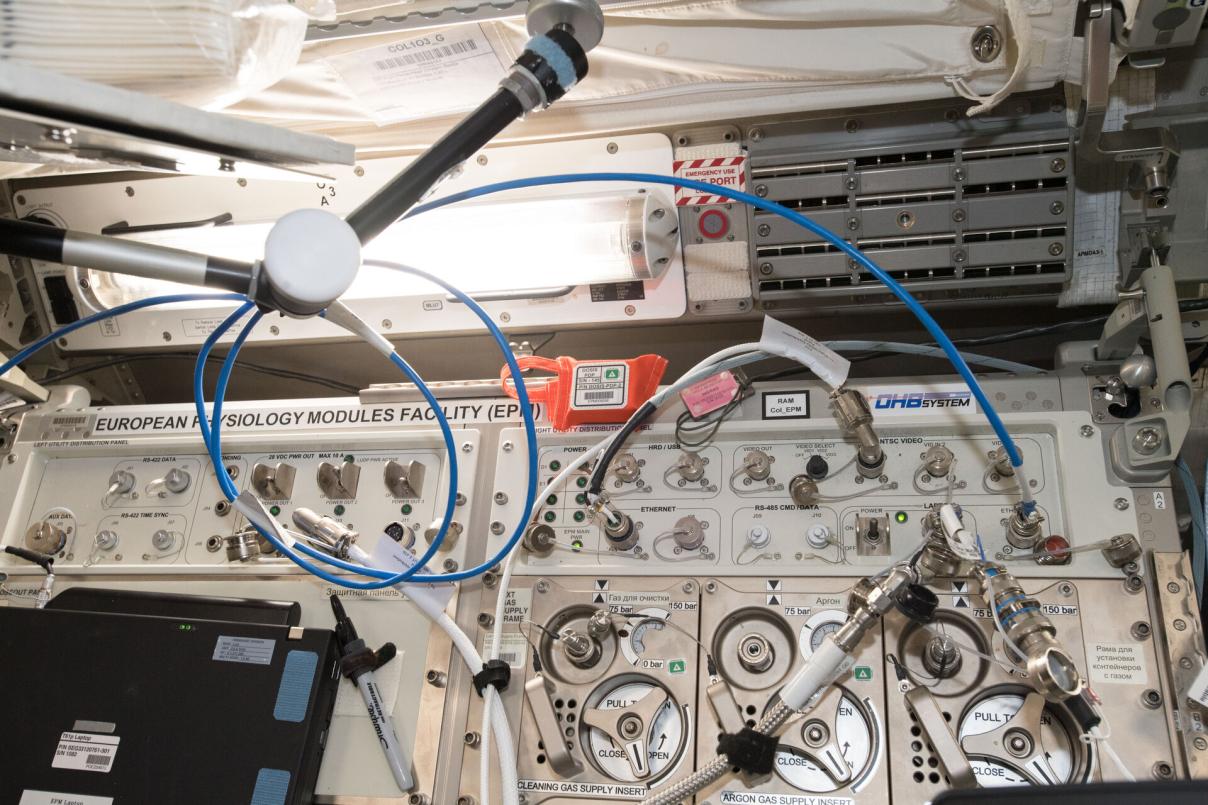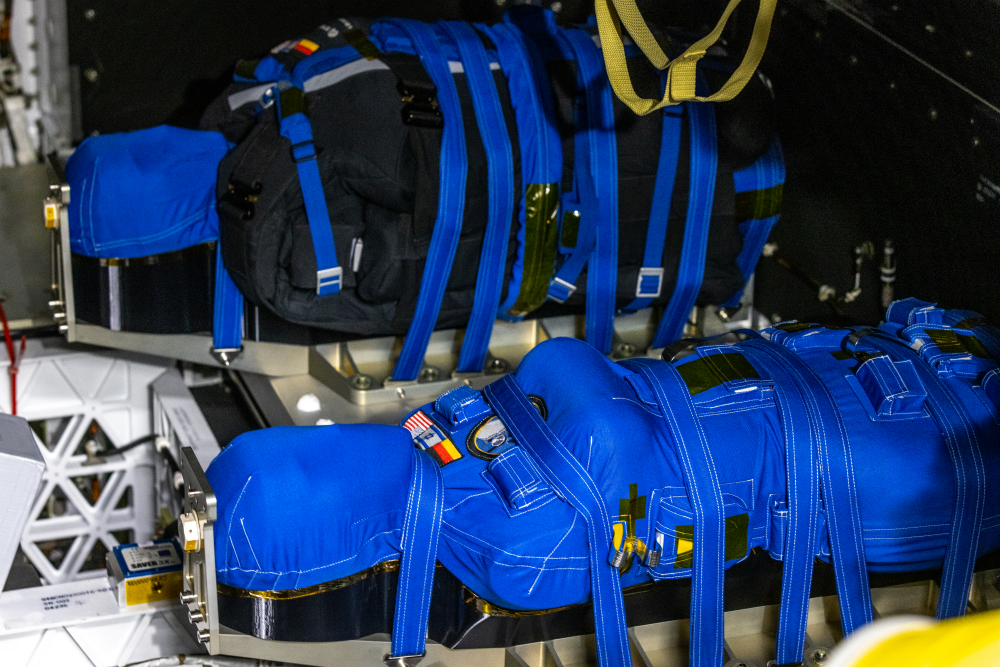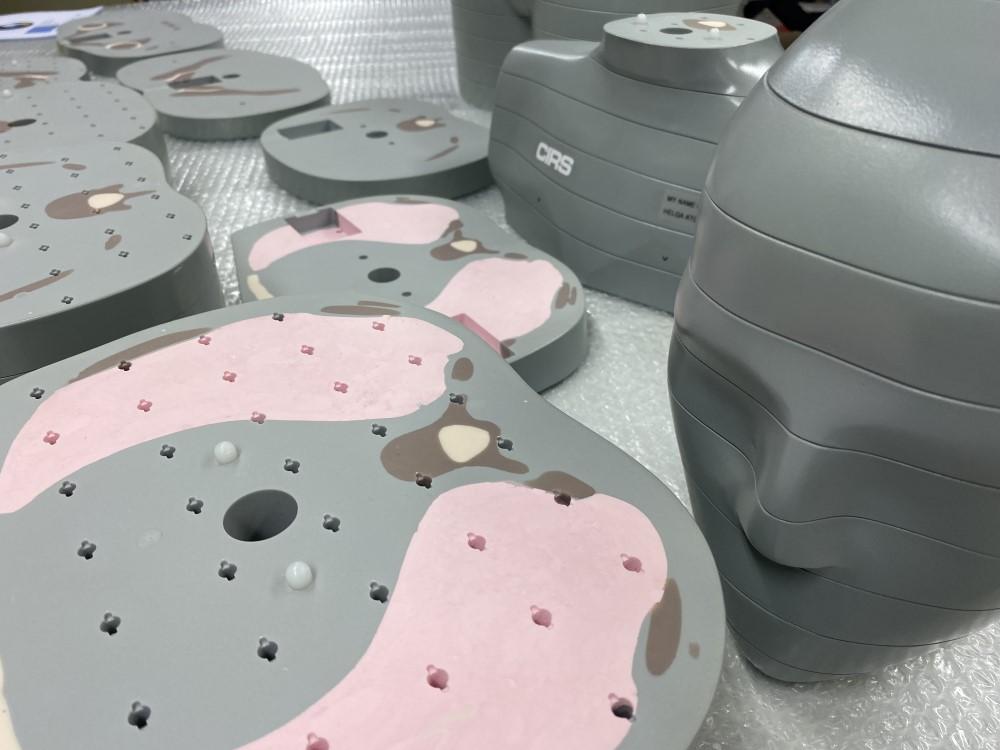Measuring radiation in space
How does SCK CEN identify exposure to cosmic radiation for space missions?
The radiation level in space is up to several hundred times higher than on Earth. From the moment humans leave the protective shield of the Earth's atmosphere and magnetic field, radiation becomes a major risk against which we must protect ourselves. SCK CEN helps measure and understand cosmic radiation.

DOSIS 3D for monitoring on the ISS
SCK CEN has been part of the DOSIS 3D consortium since 2009. This partnership, led by DLR – the German Aerospace Research Centre – brings together experts from Belgium, Germany, Hungary, Austria, Poland, the Czech Republic, Switzerland, Japan and China. The team has been sending detectors to the Columbus module of the International Space Station (ISS) every 6 months. The Columbus module is a European laboratory monitored by dozens of dosimeters. These record the total amount of radiation absorbed during the time astronauts are there in space, as well as the fluctuations over time.
Every six months – that is, at every rotation of the crew – we replace the detectors and read them. From the results so far, we can deduce that the dose rate in the Columbus module is about 200 times higher than on the Earth's surface and that there are variations of several dozens of percent depending on solar activity, the altitude of the ISS above the Earth's surface and the position within the Columbus module
Photo: ©ESA
💡 For more information, click further to this paper 'DOSIS & DOSIS 3D: long-term dose monitoring onboard the Columbus Laboratory of the International Space Station (ISS)'.
Member of international expert group
SCK CEN invariably participates in 'WRMISS – The Workshop on Radiation Monitoring for the International Space Station'. At that annual meeting, experts, including NASA and ESA, come together to discuss measurements in current space programmes. For example, we participate in discussions on radiation dose simulations for astronauts and share our knowledge with global partners for the benefit of the health of astronauts, at space stations around Earth such as ISS, or future missions to the Moon and Mars.
🔗 MDo you want to know more about WRMISS? Visit this website.

300 Belgian sensors aboard Artemis I
On 16 November 2022, the US space agency NASA is launching its brand-new moon rocket SLS (Space Launch System). This 98-metre-tall rocket catapulted the spacecraft Orion into orbit and around the moon. That spaceship was 'manned' by three dummies who flew along and carefully measured all the conditions on board. Commander Moonikin Campos – NASA's dummy – measured the pressures and loads that astronauts experience at launch. The other two dummies – Helga and Zohar – identified the exposure to cosmic radiation during a lunar mission – down to the organ level!
During the Artemis I mission, the German dummy Helga did not wear a vest, while her Israeli sister Zohar did. "We glued about 100 dosimeters onto the outside of both dummies – analogous to the human body at the level of the skin. What we were able to measure in that place tells us a lot about the dose we find in more radiation-sensitive organs. Consider, for example, the stomach, lungs or uterus.

We did the same with Zohar – the dummy with a vest – but we placed 100 additional detectors on the vest. This gave us the opportunity to compare the radiation exposure between the two dummies, calculate the radiation difference when wearing a space vest and thus verify its protection," clarified Olivier Van Hoey, Dosimetry Expert at SCK CEN.
This experiment is called 'MARE', which is an acronym for 'Matroshka AstroRad Radiation Experiment'. It is a collaboration between the DOSIS 3D team, NASA, Lockheed Martin, the Israeli Space Agency ISA and StemRad.
💡 Find out more? Read more here.